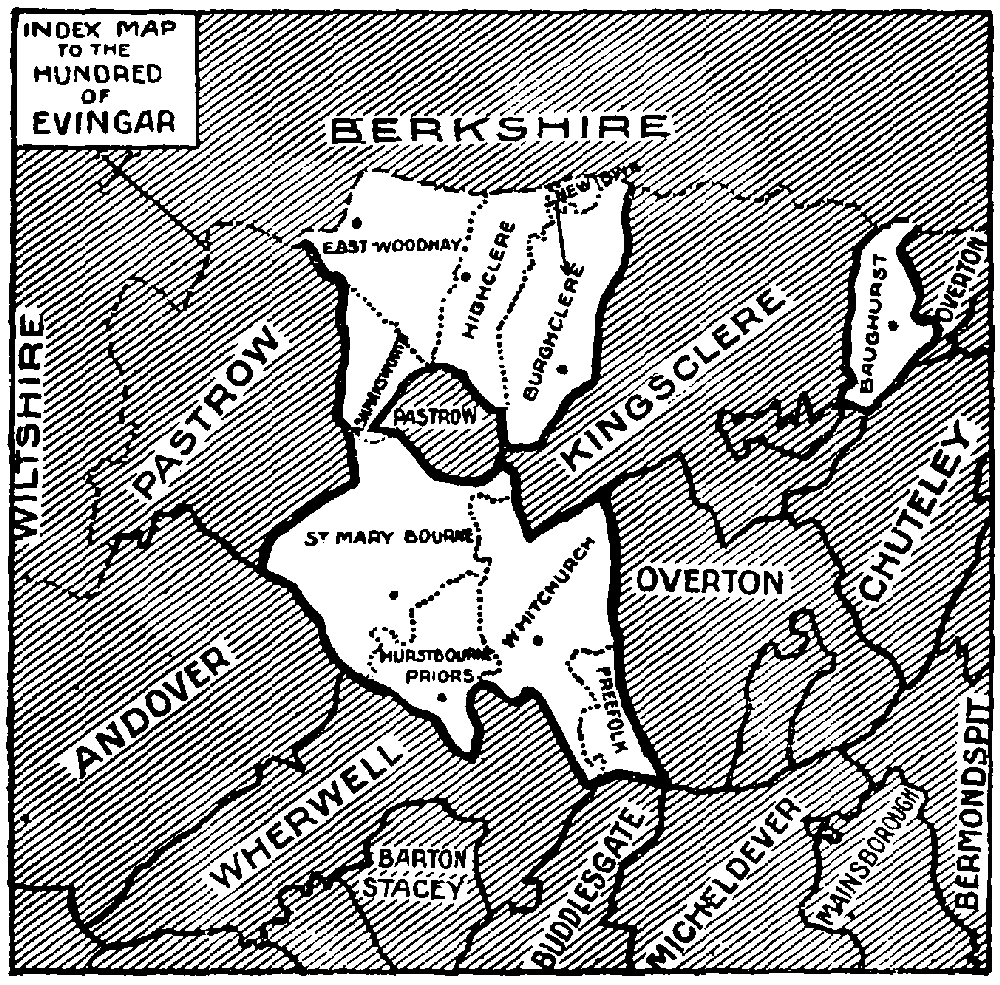A History of the County of Hampshire: Volume 4. Originally published by Victoria County History, London, 1911.
This free content was digitised by double rekeying. All rights reserved.
'The hundred of Evingar', in A History of the County of Hampshire: Volume 4, ed. William Page (London, 1911), British History Online https://prod.british-history.ac.uk/vch/hants/vol4/p273 [accessed 4 May 2025].
'The hundred of Evingar', in A History of the County of Hampshire: Volume 4. Edited by William Page (London, 1911), British History Online, accessed May 4, 2025, https://prod.british-history.ac.uk/vch/hants/vol4/p273.
"The hundred of Evingar". A History of the County of Hampshire: Volume 4. Ed. William Page (London, 1911), British History Online. Web. 4 May 2025. https://prod.british-history.ac.uk/vch/hants/vol4/p273.
THE HUNDRED OF EVINGAR
Containing The Parish Of Ashmansworth; Baughurst; Burghclere (fn. 1); Freefolk; Highclere; Hurstbourne Priors; Newtown; St. Mary Bourne; Whitchurch; East Woodhay
The above list represents the extent of the hundred in 1831. (fn. 2)
At the time of the Domesday Survey (fn. 3) the hundred of Evingar comprised Whitchurch, Freefolk, Hurstbourne Priors (fn. 4) and Clere, (fn. 5) and was assessed at 78½ hides, (fn. 6) whereas in the time of King Edward the Confessor it had been assessed at 86 hides.
In the 13th century the hundred included, besides, Ecchinswell in Kingsclere, Ashmansworth, East Woodhay (fn. 7) and Newtown, (fn. 8) making its extent almost identical with that of 1831.
The tithing of Swampton in the parish of St. Mary Bourne, which was included under Kingsclere Hundred at the time of the Domesday Survey, formed part of the hundred of Evingar before 1346. (fn. 9) The tithing of Earlstone in the parish of Burghclere was included in the hundred of Pastrow in 1316 and in the hundred of Kingsclere in 1346 and 1428. (fn. 10) It was not until after 1831 that it was transferred from Kingsclere to Evingar. Between 1831 and 1841 Tufton was added to the hundred, and in 1850 a separate ecclesiastical parish was formed of Woolton Hill, originally in the parish of East Woodhay.

Index Map to the Hundred of Evingar
In 1280 the hundred was declared to be the property of the Prior and convent of St. Swithun and its value was given as 40s., (fn. 11) and in 1284 John de Pontoise, Bishop of Winchester gave up all right in the hundred to the prior and convent. (fn. 12)